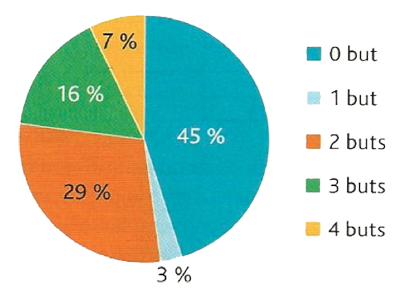Ce diagramme représente la répartition du nombre de buts marqués par match
pour une équipe de football tout au long du championnat.

Le nombre moyen de buts marqués par match au cours du championnat est :
| Votre réponse | Choix | Commentaire | Bonne réponse |
|---|
| $\overline{x} = 0,5$
| | |
| $\overline{x} = 1,37$
| | |
| $\overline{x} = 2$
| | |
| On ne peut pas savoir.
| | |
On obtient ce résultat en faisant :
$\overline{x} = 0×0,45+1 \times 0,03+2 \times 0,29+3 \times 0,16+4 \times
0,07=1,37$